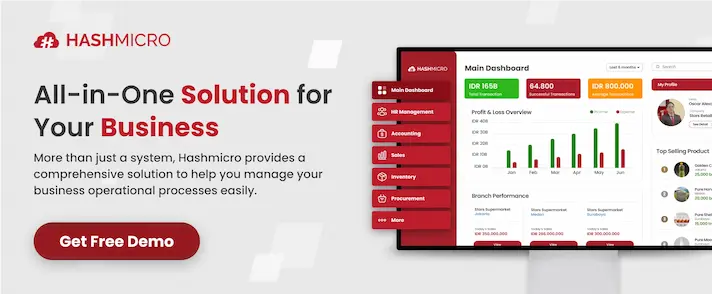Smooth warehouse operations are crucial for business success. Challenges like inaccuracies and bottlenecks can hinder efficiency. Companies can overcome these hurdles by optimizing warehouse labor scheduling.
By assessing current warehouse processes, refining inventory management, improving warehouse layout and design, incorporating technology and automation, streamlining order fulfillment processes, prioritizing workforce training and development, embracing lean principles, monitoring key performance indicators, and collaborating with suppliers and carriers, businesses can achieve operational efficiency and customer satisfaction.
In this comprehensive guide, we will explore the various aspects of warehouse labor scheduling and how it plays a critical role in warehouse operations. By understanding warehouse labor scheduling, the role of technology in labor scheduling, key principles of effective labor management, and best practices for warehouse labor scheduling, businesses can enhance efficiency, reduce costs, and deliver exceptional customer satisfaction.
In the following sections, we will delve deeper into each aspect, providing valuable insights and practical tips to help you optimize your warehouse labor scheduling and drive success in your operations.
Overview of Warehouse Labor Scheduling and Its Critical Role in Warehouse Operations
Warehouse labor scheduling is an essential aspect of efficient warehouse operations. It involves evaluating the labor requirements of the warehouse, matching the skills and availability of staff with the needs of the facility, and ensuring a highly skilled workforce. Effective labor scheduling plays a critical role in achieving operational efficiency and meeting the demands of customers.
With proper labor scheduling, businesses can optimize their resources and ensure that the right people are assigned to the right tasks at the right time. This eliminates inefficiencies, reduces bottlenecks, and improves overall productivity. By aligning labor schedules with the warehouse’s operational needs, businesses can streamline processes and enhance their ability to meet customer orders promptly.
One of the key benefits of optimized warehouse labor scheduling is improved customer satisfaction. When labor is scheduled effectively, it leads to faster order processing, accurate inventory management, and efficient order fulfillment. This, in turn, results in quicker delivery times, reduced errors, and increased customer satisfaction.
Additionally, warehouse labor scheduling plays a vital role in maintaining a cohesive and motivated workforce. By matching staff skills and availability with the needs of the warehouse, businesses can ensure that employees are engaged and equipped to perform their tasks effectively. This not only enhances productivity but also fosters a positive work environment and promotes employee retention.
Overall, warehouse labor scheduling is a critical component of successful warehouse operations. By evaluating labor needs, matching staff skills and availability, and ensuring a skilled workforce, businesses can achieve operational efficiency, meet customer demands, and drive business growth.

Understanding Warehouse Labor Scheduling: Definition and Scope
Warehouse labor scheduling is a fundamental process in managing warehouse operations efficiently. It involves accurately assessing the labor requirements based on operational needs and ensuring the right staff with matching skills and availability are assigned to those needs. By effectively managing labor scheduling, companies can achieve optimal performance, enhance productivity, and meet customer demands.
Warehouse labor scheduling encompasses various tasks and responsibilities. To begin with, it involves evaluating the warehouse’s operational demands and determining the necessary workforce needed to fulfill those demands. This evaluation includes considering factors such as order volume, inventory levels, delivery schedules, and seasonal fluctuations.
Once the labor requirements are identified, the next step is to match the staff’s skills and availability to the identified needs. This involves assigning specific roles and responsibilities to individuals based on their qualifications, expertise, and efficiency. By ensuring the right people are allocated to the right tasks, businesses can make the most of their workforce’s capabilities and optimize overall operational efficiency.
Continuous improvement plays a crucial role in warehouse labor scheduling as well. Regular performance reviews help identify areas for improvement and provide insights into staff performance and potential training opportunities. By embracing this feedback-driven approach, businesses can enhance employee skills and increase overall efficiency within warehouse operations.
An efficient and skilled workforce is a key component of successful warehouse labor scheduling. By investing in training and development programs, businesses can cultivate a workforce that is capable of handling the demands of warehouse operations.
Training programs can include areas such as equipment operation, inventory management, safety protocols, and other relevant skills. A skilled and efficient workforce is essential for meeting customer demands and ensuring high-quality service.
The Role of Technology in Labor Scheduling
When it comes to optimizing labor scheduling in warehouses, technology plays a crucial role. Specifically, Warehouse Management Systems (WMS) are invaluable in enhancing the efficiency and effectiveness of labor scheduling processes.
By integrating WMS platforms into warehouse operations, businesses can take advantage of various benefits that technology brings to labor scheduling. One of the key advantages is the ability to access accurate inventory data in real-time. WMS systems provide up-to-date information on stock levels, allowing managers to allocate labor resources more effectively and avoid disruptions in the workflow.
Beyond that, the receiving control system stands out as a powerful feature, seamlessly integrating barcode tracking software into a comprehensive management system. This enables a well-organized, accurate, and highly efficient receiving process, empowering businesses to optimize warehouse workflows with greater precision and control.
Furthermore, WMS platforms enable comprehensive order tracking, which further enhances labor scheduling. With real-time tracking capabilities, managers can monitor the progress of orders throughout the warehouse, ensuring that the right tasks are assigned to the appropriate staff members at the right time.
Automation is another critical feature provided by technology in labor scheduling. WMS platforms offer automation capabilities that streamline repetitive tasks, reducing reliance on manual labor. This not only improves efficiency but also minimizes the risk of human error, leading to increased accuracy in scheduling and reduced operational costs.

Integrating technology into labor scheduling also allows for dynamic labor management. With the ability to analyze real-time data, managers can adjust labor allocation based on fluctuating demand, seasonal variations, and other operational factors.
This ensures that the workforce is adequately sized to meet the changing needs of the warehouse and enables efficient utilization of labor resources. In conclusion, technology, particularly Warehouse Management Systems, plays a pivotal role in optimizing labor scheduling in warehouses.
By harnessing the power of technology, businesses can benefit from accurate inventory data, order tracking, automation capabilities, and dynamic labor management. As a result, they can achieve improved operational efficiency and effectively meet customer demands.
Key Principles of Effective Labor Management
When it comes to optimizing your warehouse labor schedule, effective labor management is key. By following a set of key principles, you can ensure that your labor scheduling process is efficient and aligned with your business goals. These principles include:
- Ensuring a Skilled Workforce: It is important to have a workforce that possesses the right skills and knowledge to handle the demands of your warehouse operations. Providing proper training and development opportunities can help create a skilled workforce capable of meeting the evolving needs of your business.
- Aligning Labor with Demand: To achieve optimal productivity, it is crucial to align your labor resources with the demand of your warehouse. This involves accurately forecasting labor needs based on historical data, current trends, and projected growth. Proper alignment ensures that you have the right amount of staff available to meet customer demands without unnecessary labor costs.
- Assigning Roles Based on Skills and Efficiencies: Assigning roles based on the skills and efficiencies of your workforce can significantly improve productivity. By matching employees with tasks that align with their strengths and abilities, you can streamline operations and minimize errors.
- Promoting Continuous Improvement through Performance Review: Regular performance reviews provide an opportunity to identify areas for improvement and recognize exceptional performance. Encouraging continuous improvement creates a culture of growth and drives overall operational excellence.
By implementing these key principles of effective labor management, you can optimize your labor scheduling process and enhance the overall efficiency of your warehouse operations.
Best Practices for Warehouse Labor Scheduling
Optimizing warehouse labor scheduling is crucial for enhancing operational efficiency and productivity. By following best practices, businesses can streamline their scheduling processes and ensure optimal utilization of resources. Here are some key strategies:
1. Define Objectives with Key Performance Indicators (KPIs)
Start by clearly defining your objectives for labor scheduling. Identify the KPIs that align with your business goals, such as order fulfillment rate, on-time delivery, or labor utilization rate. These KPIs will serve as benchmarks to measure scheduling efficiency and track performance over time.
2. Input Relevant Data for Informed Scheduling
Gather and input all relevant data into your scheduling system. This includes factors like historical demand patterns, seasonality, product velocity, and employee availability and skills. By leveraging accurate data, you can make informed decisions when assigning shifts, allocating resources, and predicting labor requirements.
3. Streamline Communication and Coordination
Efficient communication and coordination among teams are imperative for successful labor scheduling. Implement a centralized communication platform where managers, supervisors, and employees can access and share real-time information. This streamlines the exchange of important updates, shift changes, and task assignments, reducing confusion and minimizing delays.
4. Encourage Employee Feedback on the Scheduling System
Engage your workforce and encourage their feedback on the scheduling system. Ask for their input on schedule preferences, process improvements, and potential bottlenecks. Creating an open feedback loop fosters employee satisfaction and empowers them to contribute ideas for optimizing labor scheduling. When employees feel heard and valued, they are more likely to align their efforts with business objectives.
By implementing these best practices, businesses can achieve efficient and effective warehouse labor scheduling. It not only optimizes resource utilization but also enhances employee satisfaction and customer service. Make these strategies an integral part of your scheduling process to boost overall warehouse efficiency and drive business success.




















































